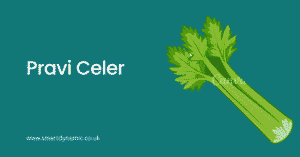For the serious leatherworker, tailor, or model-maker, the foundation of every perfect cut isn’t just a sharp blade—it’s the surface beneath it. Enter Zuschneidfelle, the German-engineered secret to flawless craftsmanship. These specialized cutting hides are more than just a mat; they are a durable, self-healing partner in your creative process, protecting your tools and your work surface while ensuring razor-sharp precision.
This comprehensive guide delves into the world of Zuschneidfelle, exploring their origins, materials, and undeniable benefits. Whether you’re a seasoned professional or a dedicated hobbyist, understanding this essential tool will transform your workflow and elevate the quality of your creations.
1. Introduction — What Are Zuschneidfelle?
Zuschneidfelle are specialized cutting surfaces, traditionally made from high-quality leather or advanced synthetic materials. Used primarily in leather crafting, tailoring, and precision model-making, their primary purpose is to provide a protective, self-healing base for cutting with rotary cutters, scalpels, and craft knives.
The functionality of a Zuschneidfelle goes beyond a simple barrier. It preserves the sharpness of your blades, offers resistance for clean cuts, and protects your valuable workbench from scratches and gashes. For any artisan, investing in a high-quality Zuschneidfelle is a non-negotiable step towards professional, precise, and efficient work.
2. Understanding Zuschneidfelle: Origin & Meaning
The term Zuschneidfelle has straightforward yet descriptive German roots. It combines “Zuschneiden,” which means “to cut to size” or “to cut out,” and “Felle,” the plural for “hides” or “skins.” Literally, it translates to “cutting hides.”
Traditionally, these were simply tough, full-grain leather hides used by cobblers and tanners as a cutting base. The modern interpretation has evolved to include a range of materials, but the core principle remains: a durable, resilient cutting hide that can withstand repeated use. This evolution from a simple piece of leather to a finely tuned craftsmanship material reflects the growing demands of modern artisans.
3. Material Types & Quality Grades
Not all Zuschneidfelle are created equal. The material dictates its durability, cost, and suitability for different tasks. Here’s a breakdown of the primary types:
-
Natural Leather Zuschneidfelle: The classic choice. Made from dense, vegetable-tanned or chrome-tanned bovine hides, these offer excellent self-healing properties and a naturally grippy surface that prevents material slippage. They are a top-tier choice for precision cutting hides in leatherworking.
-
Synthetic (PVC or Polymer) Zuschneidfelle: These are common modern alternatives, often marketed as self-healing cutting mats. They are lightweight, affordable, and often feature printed grids for measuring. However, they can be prone to deep gouges and may release microplastics over time.
-
Eco or Recycled Variants: A growing segment includes eco leather craft mats made from recycled leather fiber composites or bio-based polymers. These appeal to environmentally conscious crafters looking for a sustainable cutting mat alternative.
Comparison Table: Zuschneidfelle Materials
| Feature | Natural Leather | Synthetic (PVC) | Eco/Recycled |
|---|---|---|---|
| Durability | Excellent (long-lasting, develops a patina) | Good (can be gouged permanently) | Good to Very Good |
| Cost | Higher initial investment | Low | Moderate |
| Eco-Impact | Biodegradable (if veg-tanned) | High (plastic waste) | Low (uses recycled content) |
| Flexibility | Low (firm, stable base) | High | Moderate |
| Self-Healing | Excellent for fine cuts | Good for light cuts | Varies by composite |
Expert Tip: For heavy-duty use with knives, a thick, natural leather Zuschneidfell is unparalleled. For light craft work where measurement grids are crucial, a high-quality synthetic mat may suffice.
4. How Zuschneidfelle Are Made (Behind the Craft)
The creation of a premium leather Zuschneidfelle is a testament to traditional craftsmanship. It begins with selecting high-quality rawhide, which undergoes a rigorous tanning process—often vegetable tanning for its durability and environmental profile. The tanned hide is then dried and conditioned.
Artisans then cut the hide into sheets, meticulously inspecting for flaws. The surface may be lightly buffed to ensure uniformity, but it is left largely unfinished to maintain its natural, grippy texture. Unlike mass-produced mats, high-end Zuschneidfelle often adhere to strict quality controls, sometimes reflecting standards set by organizations like the Leather Working Group, which audits for environmental compliance.
5. Benefits of Using Zuschneidfelle
Why should you choose a Zuschneidfelle over any other surface? The benefits are clear and impactful:
-
Superior Surface Protection: Guards your tabletop from deep cuts and scratches, prolonging the life of your furniture.
-
Enhanced Precision: The firm yet yielding surface allows for clean, crisp cuts without snagging, a key advantage for precision cutting hides.
-
Extended Tool Life: The self-healing nature of leather and high-quality synthetics prevents premature blunting of your expensive blades.
-
Eco-Sustainability: Natural leather Zuschneidfelle are a biodegradable, long-lasting option, reducing plastic waste.
-
Professional Aesthetics: A well-maintained leather cutting hide on your workbench signals a commitment to quality and craftsmanship.
6. Common Applications & Use Cases
The versatility of Zuschneidfelle makes them indispensable across several disciplines:
-
Leather Crafting: The primary use. Essential for cutting patterns, straps, and intricate designs from premium leather hides without damaging your tools or work surface.
-
Tailoring and Sewing: Ideal for cutting delicate fabrics like silk or thick materials like canvas with a rotary cutter, preventing slips and ensuring accuracy.
-
Upholstery Work: Provides a durable base for cutting heavy vinyls and fabrics with utility knives.
-
Model-Making: Perfect for hobbyists cutting balsa wood, plastic sheets, or photo-etch parts with a scalpel.
Best Practice: Always place your Zuschneidfelle on a flat, stable surface. Rotate it periodically to ensure even wear across the entire area.
7. Zuschneidfelle vs Regular Cutting Mats
How does this specialized tool stack up against the standard cutting mat found in most craft stores?
Comparison Table: Zuschneidfelle vs. Standard Cutting Mat
| Feature | Zuschneidfelle (Leather) | Regular Cutting Mat (PVC) |
|---|---|---|
| Durability | Decades with proper care | Years, but prone to deep scars |
| Eco-Friendliness | Biodegradable | Plastic, not easily recyclable |
| Blade Longevity | Superior protection | Good, but plastic can dull blades |
| Surface Grip | Excellent (non-slip) | Can be slippery |
| Cost Over Time | Lower (one-time purchase) | Higher (needs replacement) |
| Aesthetics | Professional, improves with age | Functional, often stained |
8. How to Choose the Right Zuschneidfell
Selecting the perfect Zuschneidfelle depends on your specific needs. Use this buyer’s guide:
-
Size: Choose a size larger than the projects you typically work on. A 60cm x 90cm (24″ x 36″) size is a great starting point for most leatherworking supplies.
-
Thickness: For heavy-duty cutting, opt for a thickness of 5mm or more. For lighter tasks, 3-4mm is sufficient.
-
Surface Texture: A slightly textured surface is ideal for preventing material slippage.
-
Intended Use: Professionals should invest in the highest-grade natural leather. Hobbyists might find a robust synthetic or a smaller leather hide adequate.
Checklist:
-
My primary craft is: ________ (e.g., leatherwork, sewing)
-
My most-used cutting tool is: ________ (e.g., rotary cutter, scalpel)
-
My desired workspace size is: ________
-
My budget is: ________
9. Maintenance & Care Tips
A leather Zuschneidfelle is an investment that, with proper care, will last a lifetime.
-
Cleaning: Wipe with a dry, soft cloth to remove dust and debris. For deeper cleaning, use a slightly damp cloth and mild, PH-neutral soap. Never soak the hide.
-
Conditioning: Every 6-12 months, apply a small amount of leather conditioner (like neatsfoot oil or a dedicated leather balm) to keep the hide supple and prevent it from drying out and cracking.
-
Storage: Store flat in a cool, dry place away from direct sunlight and heat sources, which can cause warping and brittleness.
10. Sustainable & Ethical Sourcing
As consumers become more conscious, the demand for ethically produced artisan leather sheets grows. Look for suppliers who are transparent about their tanning processes. Vegetable tanning is more environmentally friendly than chrome tanning.
Certifications from groups like the Leather Working Group provide validation for environmentally sound practices. Supporting craftsman materials from sources that prioritize animal welfare and worker safety is a core part of responsible crafting. For broader insights into the crafting community’s best practices, resources like the Craft Industry Alliance are invaluable.
11. Where to Buy Zuschneidfelle
Finding authentic, high-quality Zuschneidfelle is crucial.
-
Specialist Retailers: Companies like Tandy Leather and other dedicated leatherworking supplies stores often carry them or can source them.
-
Online Marketplaces: Etsy is excellent for finding handmade or artisan-produced hides. Be sure to read reviews carefully. Amazon also offers options, but vet the seller and product descriptions thoroughly.
-
Direct from Tanneries: Some European tanneries sell directly to the public.
Tip for Authenticity: Authentic leather Zuschneidfelle will have a distinct, natural leather smell and slight variations in grain and color. Be wary of products that seem too perfect or are priced suspiciously low.
You can also real our recent articles
12. FAQs
What are Zuschneidfelle made of?
They are traditionally made from dense, natural leather hides, but modern versions can also be made from self-healing polymers or recycled composite materials.
Are they eco-friendly?
Natural leather Zuschneidfelle are biodegradable and a sustainable choice, especially if vegetable-tanned. Synthetic versions are less eco-friendly.
How long do they last?
A high-quality leather Zuschneidfelle can last for decades, often outliving the tools used on them. It’s a true “buy it for life” tool.
How do you clean them?
Dry brushing is usually sufficient. For stickier residues, use a damp cloth with a drop of PH-neutral soap. Condition annually with a leather-safe product.
13. Expert Insights / Case Study
“As a professional leatherworker for over 20 years, my natural leather Zuschneidfelle is the most constant tool on my bench,” says Klaus Becker, a master saddler from Bavaria. “I inherited my first one from my mentor, and it’s still going strong 30 years later. The patina of thousands of cuts tells a story, and the surface, while marked, remains perfectly functional. It’s not just a DIY cutting surface; it’s the silent, reliable foundation of every bag, belt, and saddle that leaves my workshop. No plastic mat can offer that history or longevity.”
14. References & Authority Links
For further reading on leather and crafting standards, please consult these authoritative resources:
-
Leather Working Group (for environmental certification)
-
Craft Industry Alliance (for professional crafting insights and community)
-
Wikipedia: Leatherworking (for historical and technical context)
15. Conclusion
Zuschneidfelle represent the intersection of traditional material science and modern artisan needs. They are more than a simple accessory; they are a fundamental component of a professional, efficient, and precision-oriented workspace. By choosing a high-quality Zuschneidfelle, you are not just protecting your tools and table—you are investing in a legacy of quality craftsmanship.
Upgrade your workspace with a high-quality Zuschneidfelle and experience the difference that precision, durability, and professional heritage make.







